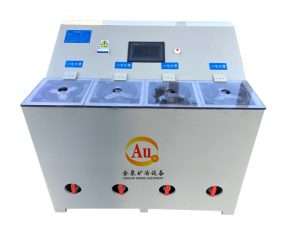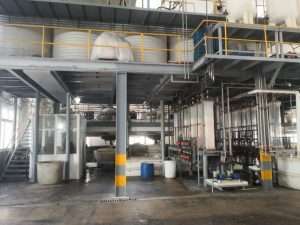Call us now:
Machinery used in the electrolytic silver process
Silver electrolysis is a process of purifying crude silver by using a potential difference. 99.99% of
silver refining needs can be met through a simple process.
Electrolyte Purification: Add silver oxide to waste electrolyte and adjust the pH to precipitate
impurities (bismuth, antimony, lead, copper, and iron); then add nitric acid to restore acidity and return
the purified electrolyte to electrolysis.
Anode Slime Treatment: Add nitric acid to dissolve non-gold metals and introduce a reducing
agent to recover silver; transfer insoluble residue to the gold recovery process.
Residual Electrode Handling: Manually remove approximately 10% residual electrodes after
electrolysis, wash and dry them for reuse, and cast the silver powder into ingots.
Anode and Cathode Plates: Cast impure metallic silver into rough anode plates with controlled
copper and gold content to prevent passivation, and use pure silver cathodes (or alternatives like stainless
steel or iridium) to ensure granular silver deposits that scrape off easily.
Electrolyte Preparation: Prepare silver nitrate electrolyte by dissolving silver powder with water
and nitric acid under controlled heating, dilute to the required concentration, and maintain proper ventilation
to remove nitrogen oxide gases.
Process Control and Electrolyzer Operation: Control nitric acid levels to boost conductivity
without causing silver redissolution, adjust silver ion concentration according to current density and anode
quality, design Möbius vertical electrolyzers using reinforced concrete or hard plastic, incorporate a polyester
conveyor belt for continuous silver powder transport, and in modern Chinese electrolyzers, use hard PVC
tanks segmented for electrolyte circulation with mechanical stirrers to prevent short circuits and enhance
efficiency.
Machinery used in the electrolytic silver process

